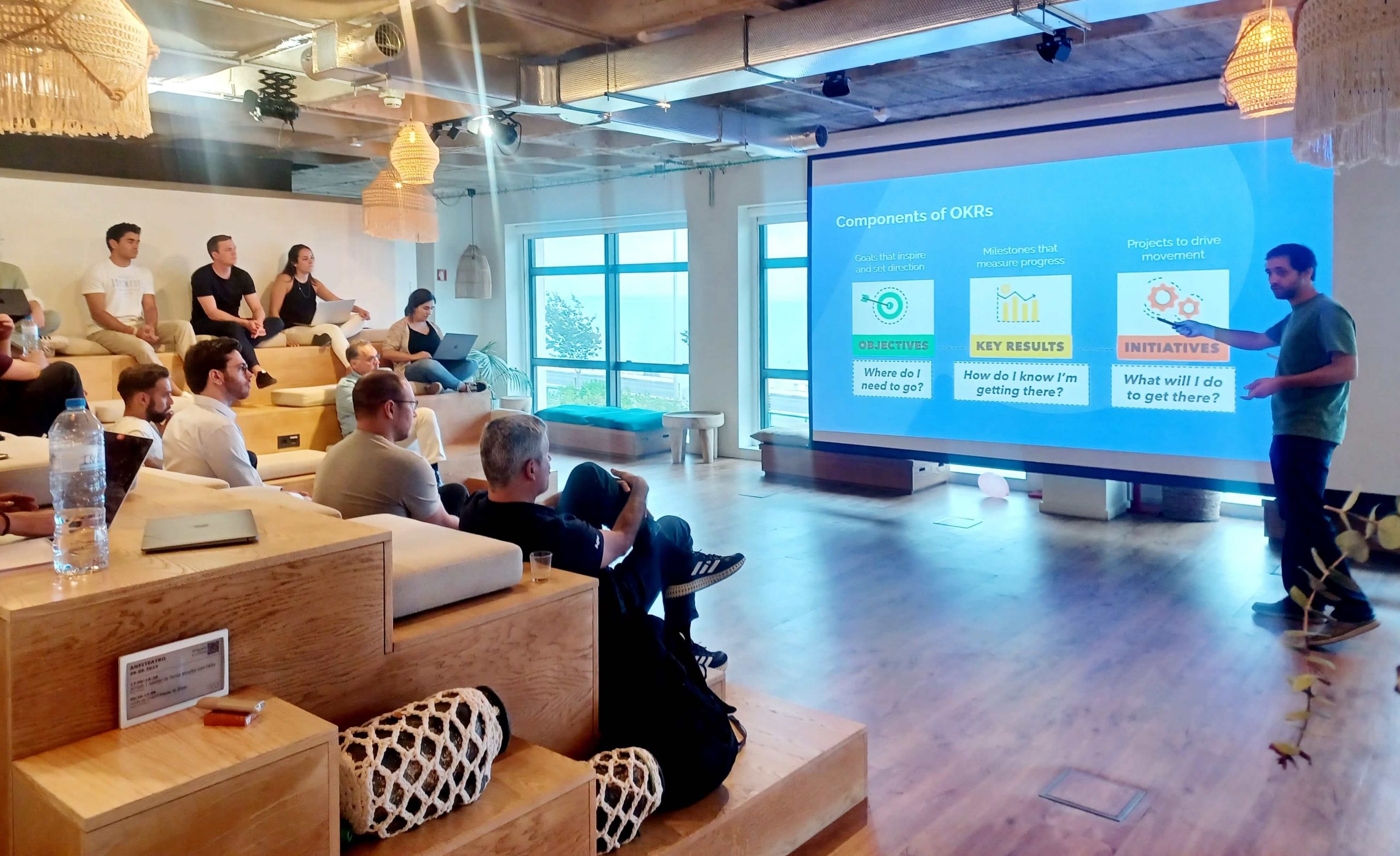In the modern world, accelerated by technology and information, defining clear and measurable goals is fundamental to the success of any company or team. A methodology that stands out for its simplicity and scalability is the Objectives and Key Results (OKRs) approach.
Diogo Cunha, CTO at Bliss Applications, explained in another WYTalk, at the Beach House – WYgroup’s HQs, how to simply align organizations’ objectives with OKRs.
This methodology allows organizations to align their goals with the global vision and strategy, ensuring that everyone works in the same direction and focuses on common points. There are 3 main concepts that we have to consider for this methodology: Objectives, Key Results, and Initiatives.
An Objective is a crucial component of any organizational strategy or mission. It must be challenging and ambitious, but at the same time, achievable. The focus of an objective can be based on results (outcome-focused) or on creating value (impact-focused). To ensure effectiveness, an objective must be clearly communicated to all relevant stakeholders.
For example, an objective might be ‘Increase sales revenue by 15% in the third quarter’, ‘Launch a new product to market by the end of the fiscal year’, or ‘Be recognized as a leader in innovation within our industry’.
Key Results (KRs) are specific, time-limited, measurable, and verifiable. They demonstrate progress toward achieving goals. They must be challenging and ambitious, yet achievable, and must be communicated clearly to all relevant stakeholders. To be efficiently implemented, they must be monitored regularly and explicitly, with an ideal number between 3 and 5 per Objective.
KRs can be analyzed in a variety of ways depending on the category, metric, and timing. These can be based on inputs (things we can control), outputs (results of our actions), or outcomes (considering the initial context and desired results). For example, an input-based KR might be ‘Complete 10 market research projects by the end of Q3’. An output-based one might be ‘Launch 3 new products to the market by the end of the fiscal year’. And one based on the outcome might be ‘Increase sales revenue by 15% in the third quarter’. Additionally, KRs can be measured in terms of quality, such as ‘Achieve a customer satisfaction rate of 90% or greater by the end of the third quarter’, or quantity, such as ‘Deliver 500,000 units of the product by the end of the second quarter’ ‘. Finally, they can also be classified as leading (leading indicators) or lagging (lagging indicators).
Initiatives are specific actions or projects that help achieve objectives and key results. They must be assigned to specific individuals or teams, with clear ownership and responsibility. They can then be broken down into delegable steps or tasks with deadlines, but they must be tracked and monitored regularly.
At Bliss Applications, we invest a whole day to think together about what we want to do for the year and define the Objectives for the first quarter. We create a clear and explicit alignment between quarterly objectives and company objectives or other objectives of other departments. We discussed the OKRs collaboratively and some Key Results could be shared between the Objectives in different departments or areas.
From the moment we started using this methodology, the great advantages and impacts were clear, some more direct and others more indirect. The experience of using OKRs began in the Engineering department and then became something used across the company, and although there is a feeling that we can apply this methodology more efficiently, interdepartmental and interarea alignment and transparency was almost immediate, which brought a feeling of unity and an even stronger team than already existed.
Although it is a challenge to implement this type of methodology across the board in any company due to the cultural change they impose, in our case we can say that the benefits that appeared were so clear that no one could deny that it was a path that had to be tried to do.
Originally published in LÍDER Magazine.
